Bonny bluebonnets and more at the Wildflower Center, part 2
I promised you Texas bluebonnets (Lupinus texensis) in my previous post, part 1 of last Friday’s visit to the Wildflower Center, and bluebonnets you shall have, with a bonus of winecups (Callirhoe involucrata)!
This little boy was certainly enjoying the bluebonnet meadow, running his hands along the tops of the flowers. I understand that urge—I like to feel the texture of plants too, and while bluebonnets are too low for me, they are just the right height for him.
A wider view of the bluebonnet meadow reveals a solitary Indian paintbrush as well, plus a pink penstemon.
A closer look at the penstemon
How about some columbines? Yes, please!
Ducking into the shade of the Hill Country stream garden, I enjoyed a backlit view of the meadow.
Yucca and bluebonnets
The steel siding on the administrative building and cistern seems to echo the blue of the bluebonnets.
A shady spot to take a rest
Moving on, I admired this yellow wildflower against the spiky, blue leaves of a yucca.
The sun-washed demonstration garden includes a favorite feature of mine, a stock-tank pond.
Fiery Salvia coccinea was blazing with color in the bright sunshine.
A wider view, with pink evening primrose tumbling over the edge of an enormous stock-tank planter in the background
Poppies! (using my best Wicked Witch of the West voice)
I had no idea that California poppies (Eschscholzia californica) are native to Texas, but apparently so. The Wildflower Center only grows plants native to Texas. Correction: These are Mexican gold poppies (Eschscholzia californica ssp. mexicana), a subspecies of the California poppy that is native to west Texas. Thanks to Peter Schaar for the ID.
Claret cup cactus (Echinocereus triglochidiatus) in bloom. What stunning, orange flowers perched atop that rhinocerous-skinned plant!
A number of kinetic sculptures are currently on display in the gardens, and on this windy day they were spinning merrily. (Most of my photos, if you’re wondering, were shot during moments of stillness to avoid tell-tale blurriness.)
A look back across the open demonstration garden reveals that yellow is a dominant color for native Texas plants in springtime.
Stay tuned for a third and final post about my visit to the Wildflower Center, featuring another charming wildflower: Indian blanket. For a look back at part 1 of my recent Wildflower Center visit, click here.
All material © 2006-2013 by Pam Penick for Digging. Unauthorized reproduction prohibited.


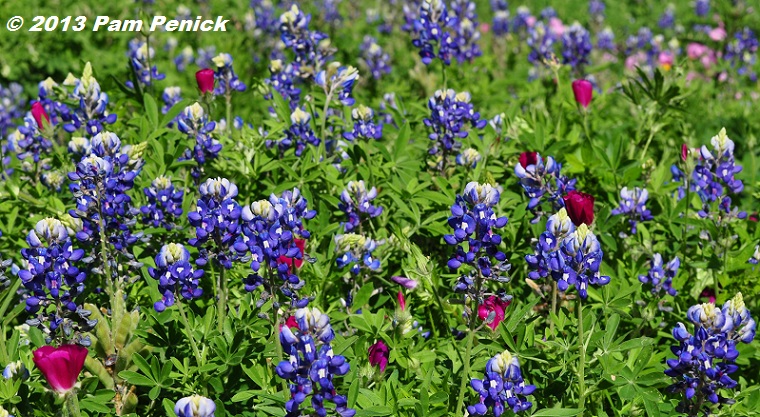
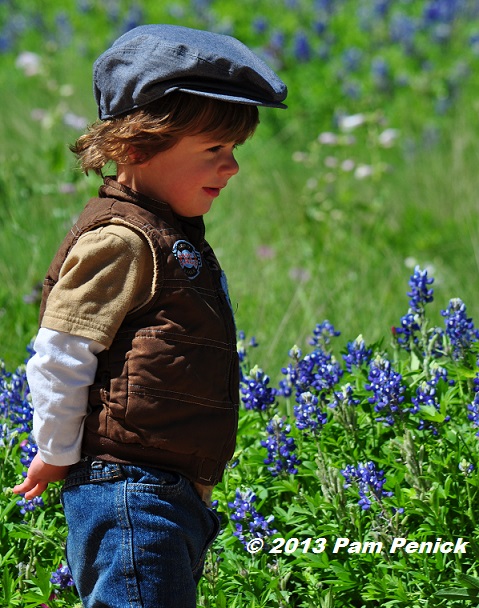
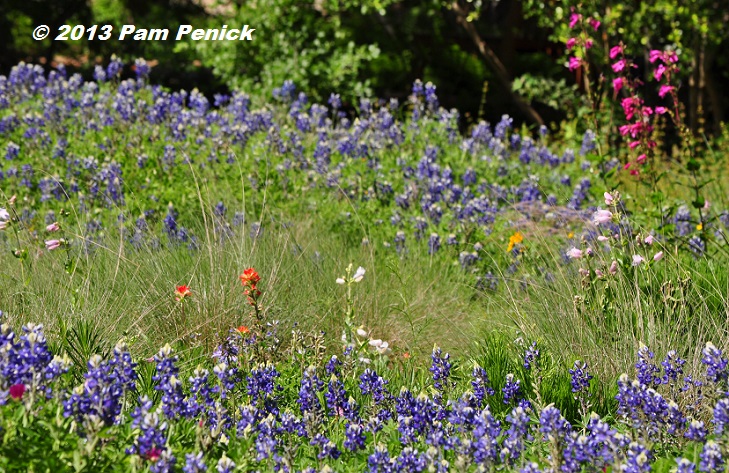
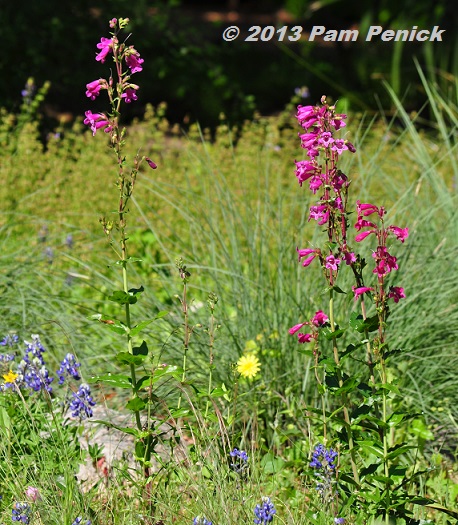
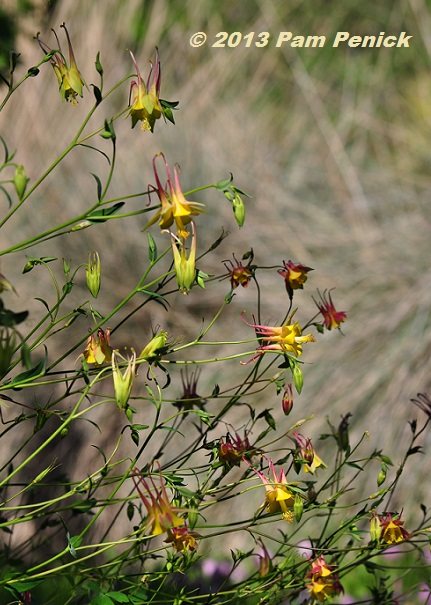
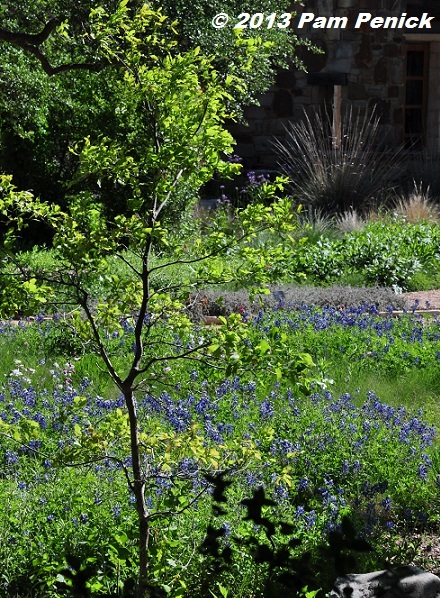
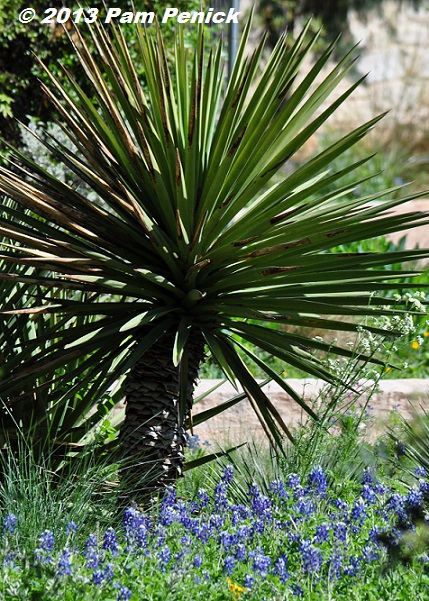
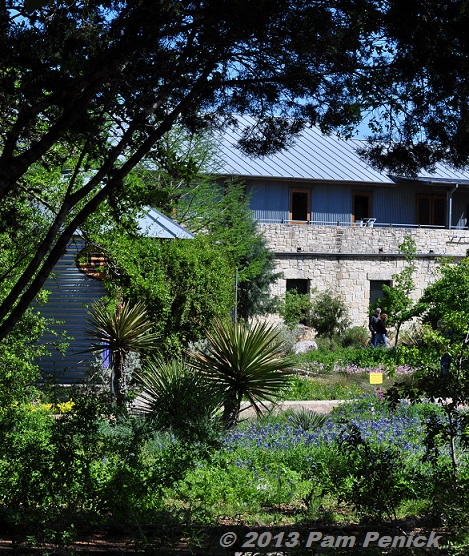
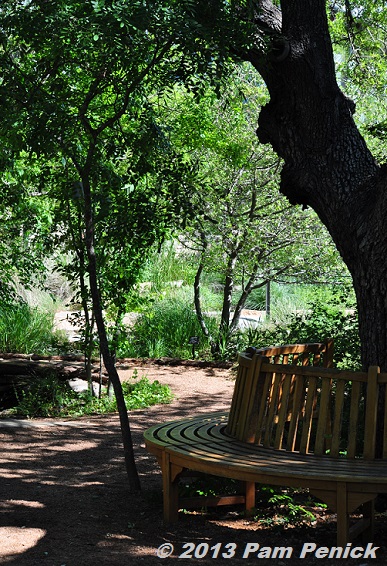
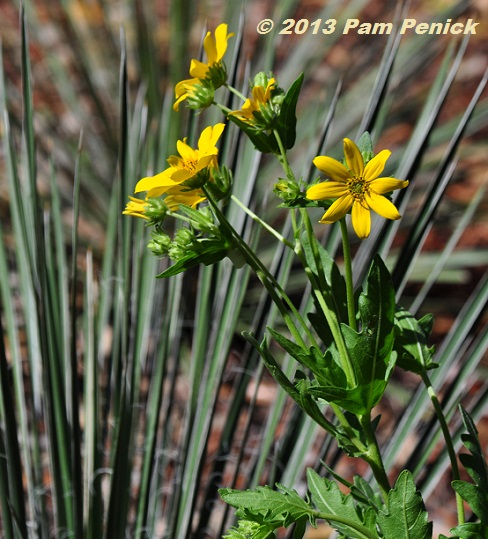
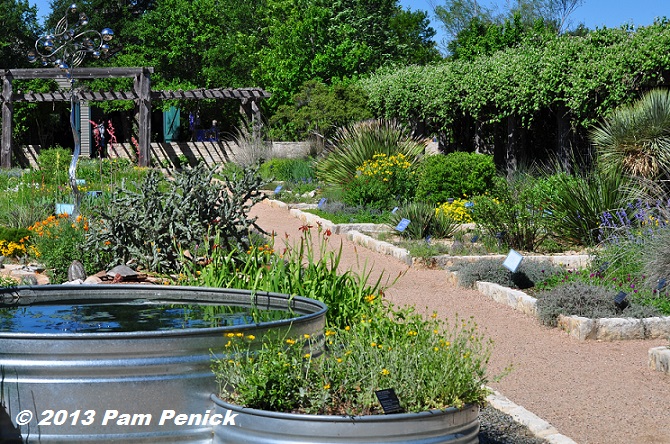
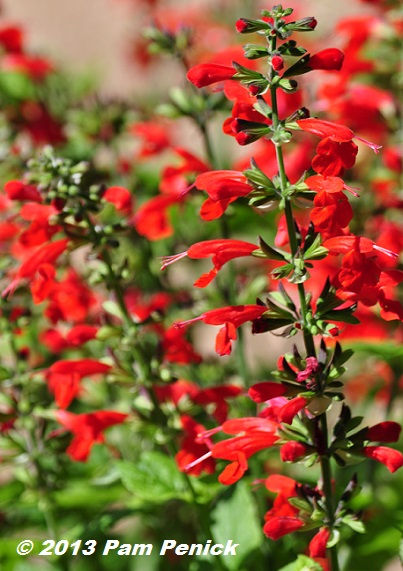
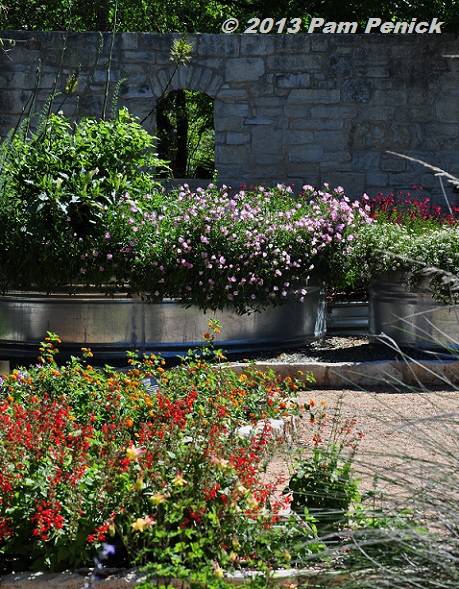
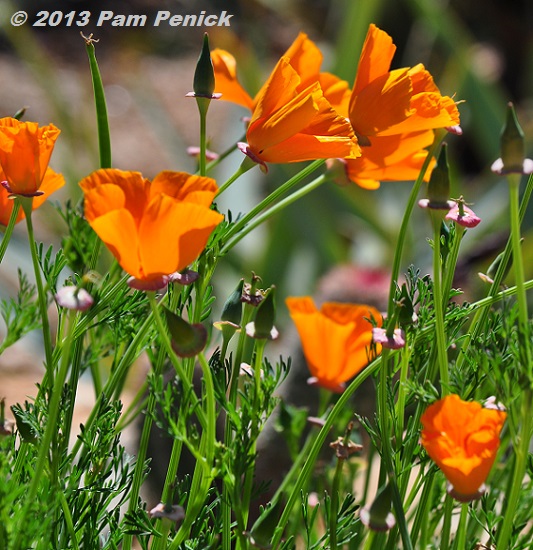
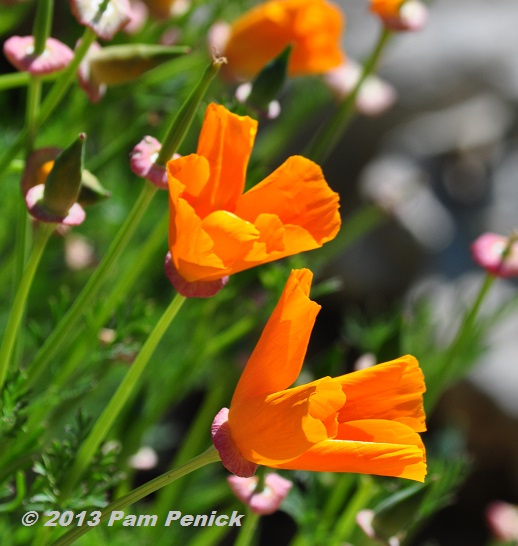
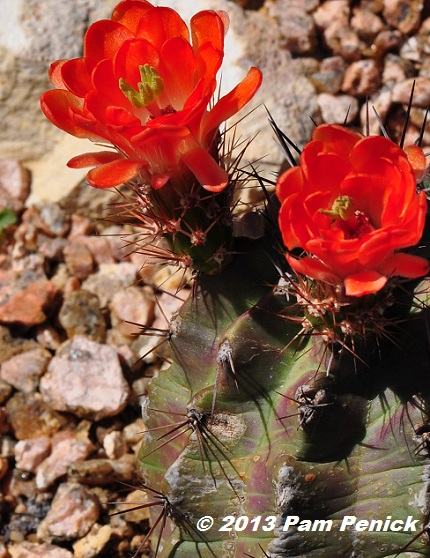
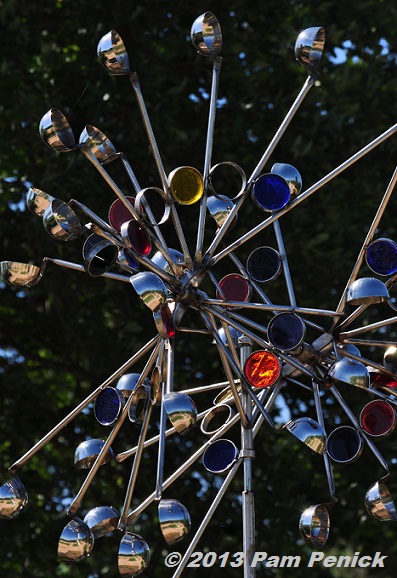
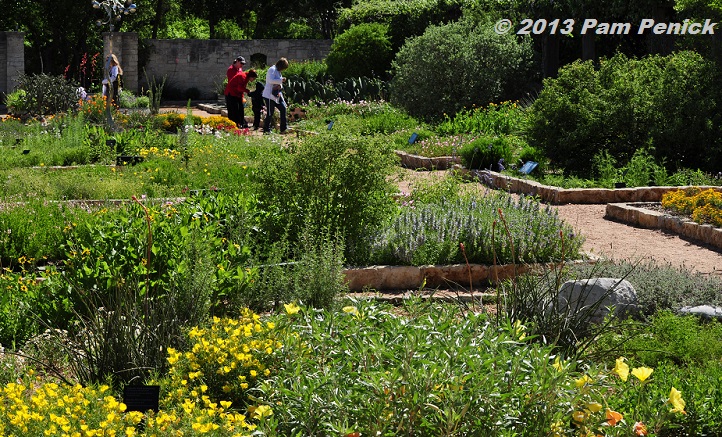
Gorgeous! It’s been a great year for pink evening primrose. I covet those winecups. That yellow wildflower looks like Engelmannia peristenia – Cutleaf daisy or Engelmann’s daisy. I purchased a seedling at the Wildflower Center’s plant sale and it’s returned reliably two springs in a row.
Perhaps that’s it, Caroline. I had some Engelmann’s daisy in my former garden, and yes, it was very reliable. —Pam
Very beautiful, and that little tyke is adorable! Was it a chilly day? I notice he’s in three layers, and I thought it would be too warm there for dressing like that now. We don’t even wear three layers here in the winter, but we don’t like to admit it’s cold. Folks break out the shorts and tank tops as soon as it hits 50.
It was a chilly morning, probably in the 50s and breezy—perfect by my standards, but I like it cool. It’s funny what you said about Pacific Northwest folks breaking out the shorts and tank tops when it hits 50. We definitely witnessed that in Vancouver two years ago (we were bundled up in jackets, and locals were wearing summer clothes). In Austin when it hits 50, everyone breaks out their scarves, jackets, and boots they’ve been dying to wear! —Pam
Gorgeous! I don’t know why I have not had luck growing yellow columbine – maybe I will try again under my pecans. Does the foliage stay after spring?
Sometimes, Heather, and sometimes not. Plant it around Turk’s caps, and then when the columbines disappear you can enjoy the summer-blooming Turk’s caps. —Pam
I need to add that penstemon to my garden! The Wildflower Center is such a beautiful place to visit – especially at this time of year.
It really is, Cynthia. I felt lucky to see it during such a peak bloom time. —Pam
I love the way the blue bonnets set the stage for little splashes of other colors. I was remembering the scene in Dances With Wolves where he was walking through the tall grasses and brushing the tops.
Gladiator has a scene like that too, Ricki. I guess we all love to feel plants. —Pam
Oh my…I do love the Evening Primrose…but I’m too scared to let it loose in my garden!
Me too, Scott. Good thing we have botanical gardens and wild roadsides, where it can do its thing. —Pam
Great shots as usual, Pam! Do you know what species of Yucca that is with the bluebonnets? And could those poppies be E. mexicana? They are closely related to California poppies, but native in the Chihuahuan desert. Inquiring minds want to know!
I didn’t get the ID on that yucca, Peter. But right you are on the Mexican gold poppy, a subspecies of the CA poppy. Good call! —Pam